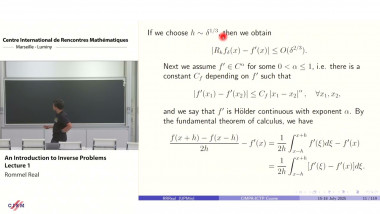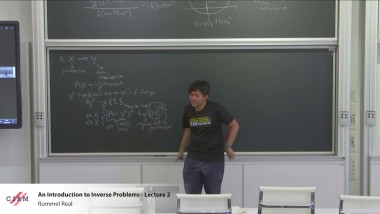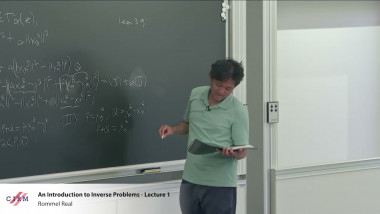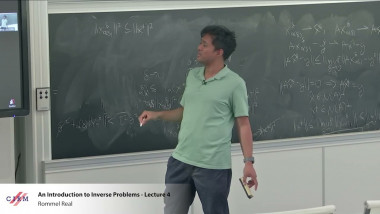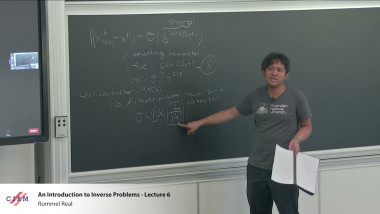Signal processing for nonlinear diffractive imaging
Apparaît dans la collection : International traveling workshop on interactions between low-complexity data models and sensing techniques / Colloque international et itinérant sur les interactions entre modèles de faible complexité et acquis
Can modern signal processing be used to overcome the diffraction limit? The classical diffraction limit states that the resolution of a linear imaging system is fundamentally limited by one half of the wavelength of light. This implies that conventional light microscopes cannot distinguish two objects placed within a distance closer than 0.5 × 400 = 200nm (blue) or 0.5 × 700 = 350nm (red). This significantly impedes biomedical discovery by restricting our ability to observe biological structure and processes smaller than 100nm. Recent progress in sparsity-driven signal processing has created a powerful paradigm for increasing both the resolution and overall quality of imaging by promoting model-based image acquisition and reconstruction. This has led to multiple influential results demonstrating super-resolution in practical imaging systems. To date, however, the vast majority of work in signal processing has neglected the fundamental nonlinearity of the object-light interaction and its potential to lead to resolution enhancement. As a result, modern theory heavily focuses on linear measurement models that are truly effective only when object-light interactions are weak. Without a solid signal processing foundation for understanding such nonlinear interactions, we undervalue their impact on information transfer in the image formation. This ultimately limits our capability to image a large class of objects, such as biological tissue, that generally are in large-volumes and interact strongly and nonlinearly with light. The goal of this talk is to present the recent progress in model-based imaging under multiple scattering. We will discuss several key applications including optical diffraction tomography, Fourier Ptychography, and large-scale Holographic microscopy. We will show that all these application can benefit from models, such as the Rytov approximation and beam propagation method, that take light scattering into account. We will discuss the integration of such models into the state-of-the-art optimization algorithms such as FISTA and ADMM. Finally, we will describe the most recent work that uses learned-priors for improving the quality of image reconstruction under multiple scattering.











